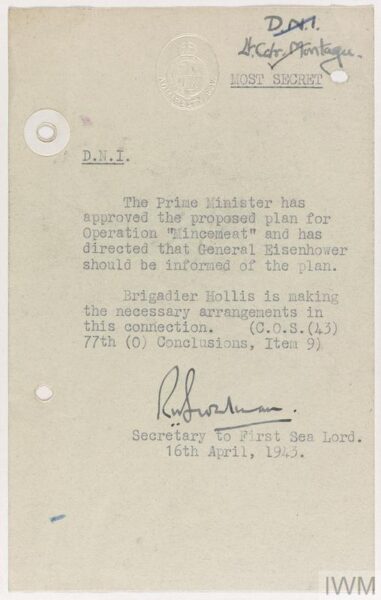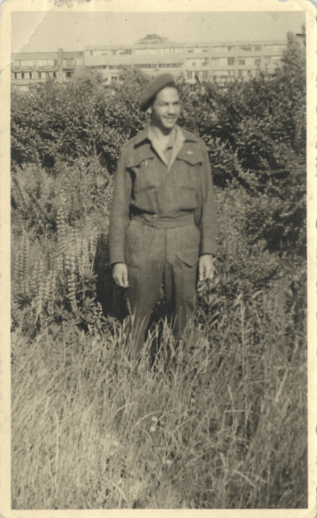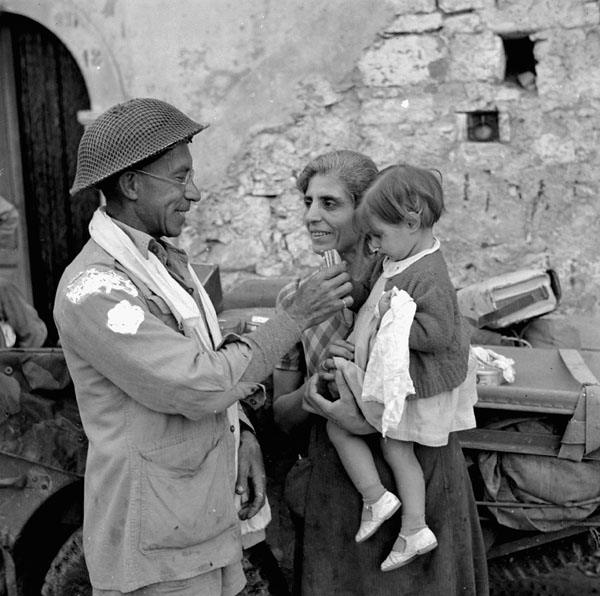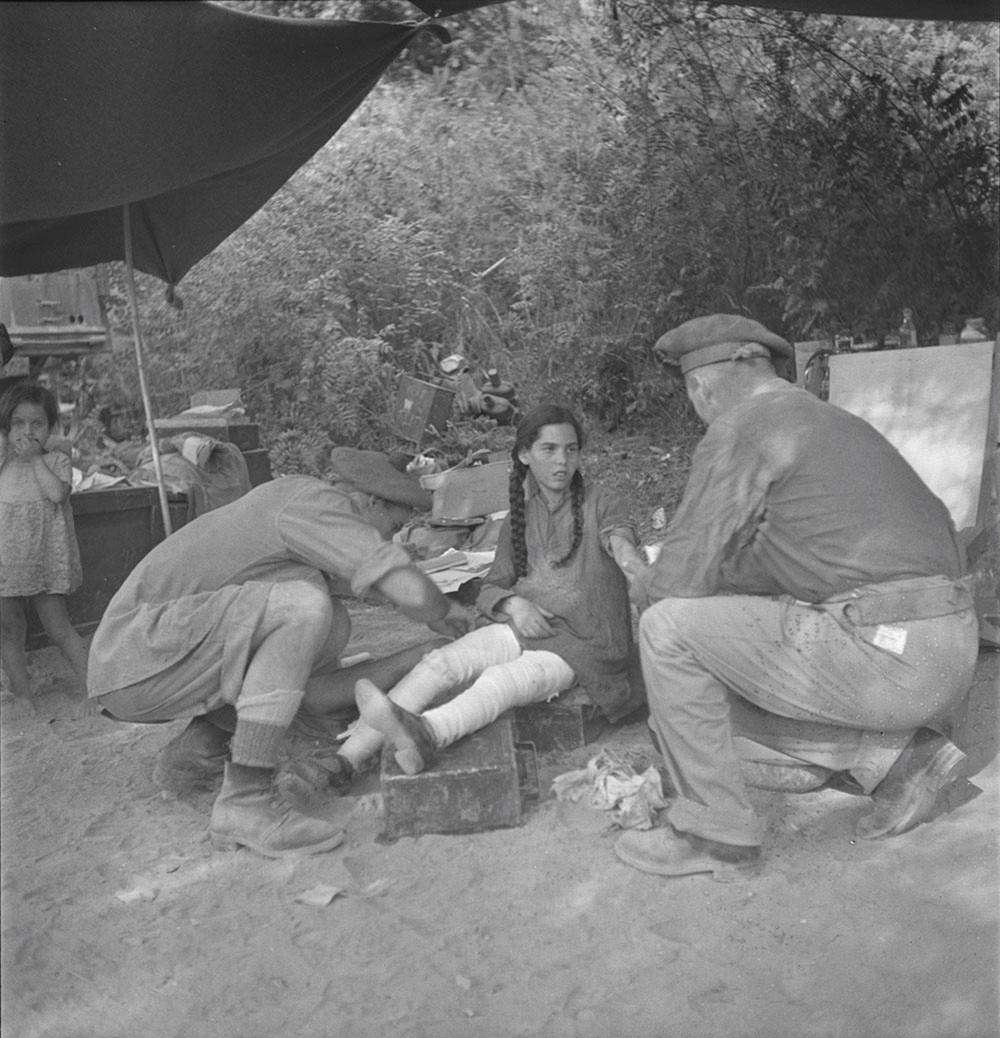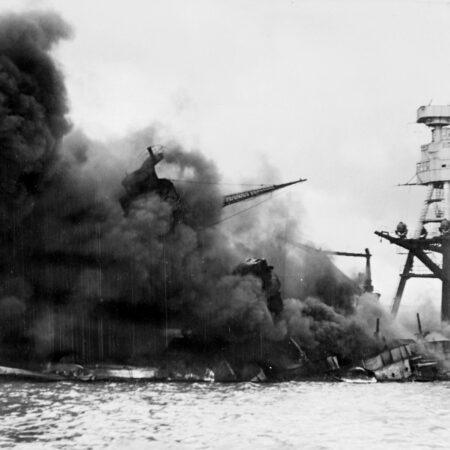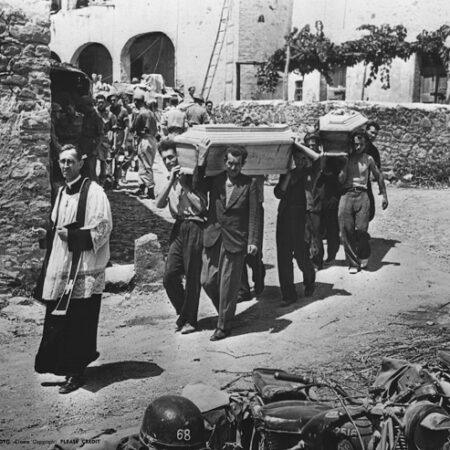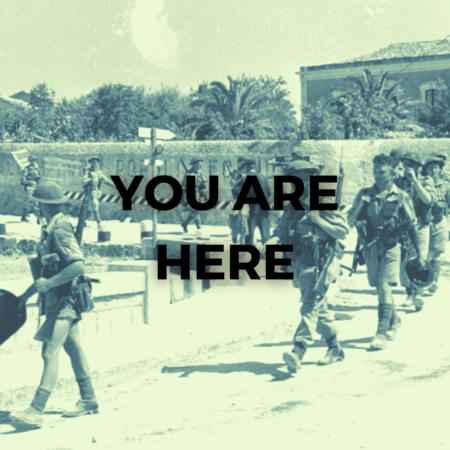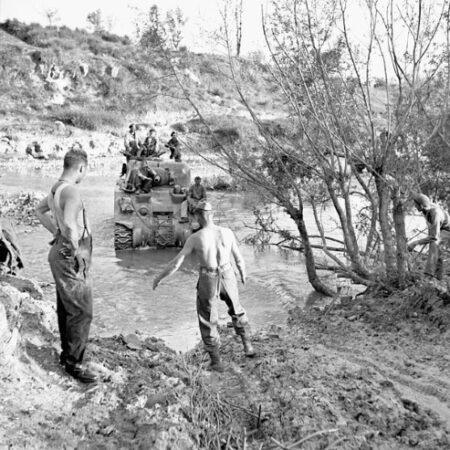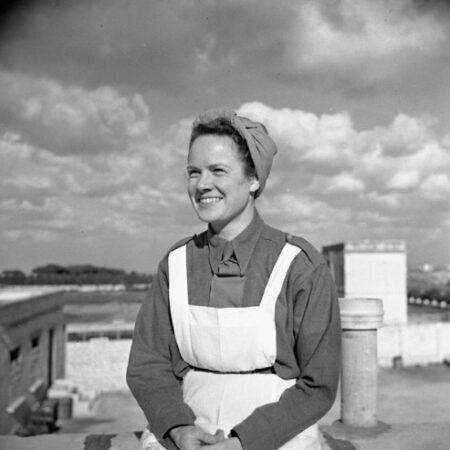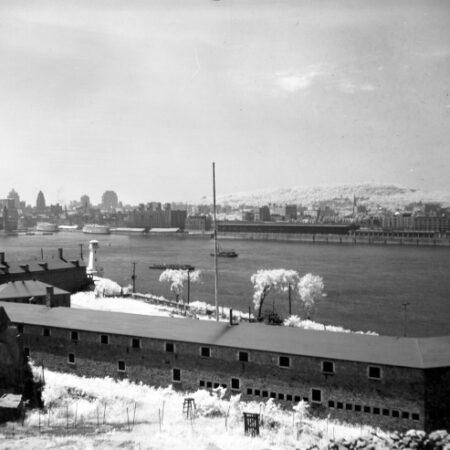OPERATION HUSKY:
THE INVASION OF SICILY
PREPARING THE FIRST LANDINGS
To prepare to invade Sicily, the Allies began Operation Barclay, a vast campaign of subterfuge to fool the enemy armies. To conceal the actual landing in Sicily, the goal was to make it seem like an invasion of the Balkans was imminent and force the enemy to move some of its forces to this area. The Allies used many ruses to do so: organizing bogus troop movements, producing fake radio transmissions, and securing substantial resources in Greece to make it seem like they were preparing an operation there.
One of their biggest ploys was Operation Mincemeat. In January 1943, the British secret service obtained the body of Glyndwr Michael, a homeless man without any family who had died on the streets of London. Accompanied by a false identity, a British naval uniform, and forged documents, the body was deliberately left on the Spanish coast, where the authorities alerted the German army. Mincemeat was a success, as the attack on Sicily came as a surprise to the German and Italian armies.
OPERATION HUSKY
Huron Brant:
heroes in Grammichele
A member of the Kenhtè:ke community of the Kanien’kéha Nation in Ontario, Huron Brant enlisted with the Hastings and Prince Edward Regiment. In Italy, Brant suffered the effects of a long and brutal campaign and met twice with a psychiatrist, who diagnosed him with post-traumatic stress disorder. With no news from his wife for many months, Brant reportedly asked to return home but was sent back to the front. In October 1944, Brant and his unit came under German fire in northern Italy and were killed in action (source: Veterans Affairs Canada).
Alvie Burden:
a long and little-known career
Alvie Burden was born in Tisdale, Saskatchewan, on January 30, 1922. At the age of 19, he enlisted with the Saskatoon Light Infantry, which asked him to take part in chemical testing in exchange for some small perks. For six weeks, Burden was sprayed with all kinds of dangerous gases in a field. He was then sent to Sicily and Italy as an estafette, or a soldier on a motorcycle who travelled from different positions to pass on messages. He was wounded in Italy on September 20, 1944, when an enemy shell threw him into the air and injured his head and wrists. Burden fortunately recovered and was transferred to the Netherlands until the end of the war.
DISCOVER IN IMAGES THE INVASION OF SICILY
THE OCCUPATION
The Italian people saw the arrival of the Allies as good news. Life in Italy during the war was difficult. Starting in 1940, Italy struggled to produce enough food for its people, who often went hungry. When Canadian soldiers arrived in the villages, the locals often gave them a warm welcome.
Shortly after the Canadian army arrived, administrative organizations were set up to serve the population. Many measures were put in place, such as handing out food to civilians, sending medical personnel to villages, and appointing influential people who would agree to work with the Allies.
The Allies also turned Sicily into an advanced base for the invasion of the Italian peninsula. With the island fully secured, the Allies transferred a large part of their military resources there and prepared for the next campaign. They carried out many landing exercises in August 1943. The following month, the Allies launched their assault on the Italian coast; however, the enemy was better prepared this time.
Below: Canadian doctors very busy treating Italian civilians.

